Get PeakVisor App
Sign In
Search by GPS coordinates
- Latitude
- ° ' ''
- Longitude
- ° ' ''
- Units of Length

Yes
Cancel
Share ×

Scan the QR code and open PeakVisor on your phone
❤ Wishlist ×
Choose
Delete
South Africa is an enchanting natural kingdom with rugged coastlines, steamy jungles, dramatic mountains, rich culture, and diverse wildlife. Located at the southernmost tip of the African continent, South Africa comprises 14561 named peaks. Table Mountain (Maclear's Beacon) is undoubtedly South Africa’s most iconic peak, with its flat tabletop summit towering above Cape Town. South Africa’s tallest and most prominent mountain is Thabana Ntlenyana, at 3,482 meters (11,423 ft).

Home to diverse geography and stunning natural landscapes, South Africa boasts beautiful coastlines, fertile plains, and rugged escarpments.
In the south, two oceans surround South Africa's 2,798 km (1,739 mi) coastline. The Atlantic laps the shores of South Africa’s west coast, and the warm Indian Ocean flows along South Africa’s eastern coastline. They meet at the southernmost point of Africa, the Cape of Good Hope.
Five countries border South Africa to the North: Namibia, Botswana, Zimbabwe, Mozambique, and Eswatini. An additional country, the Kingdom of Lesotho, is entirely landlocked within South Africa’s southeastern region.
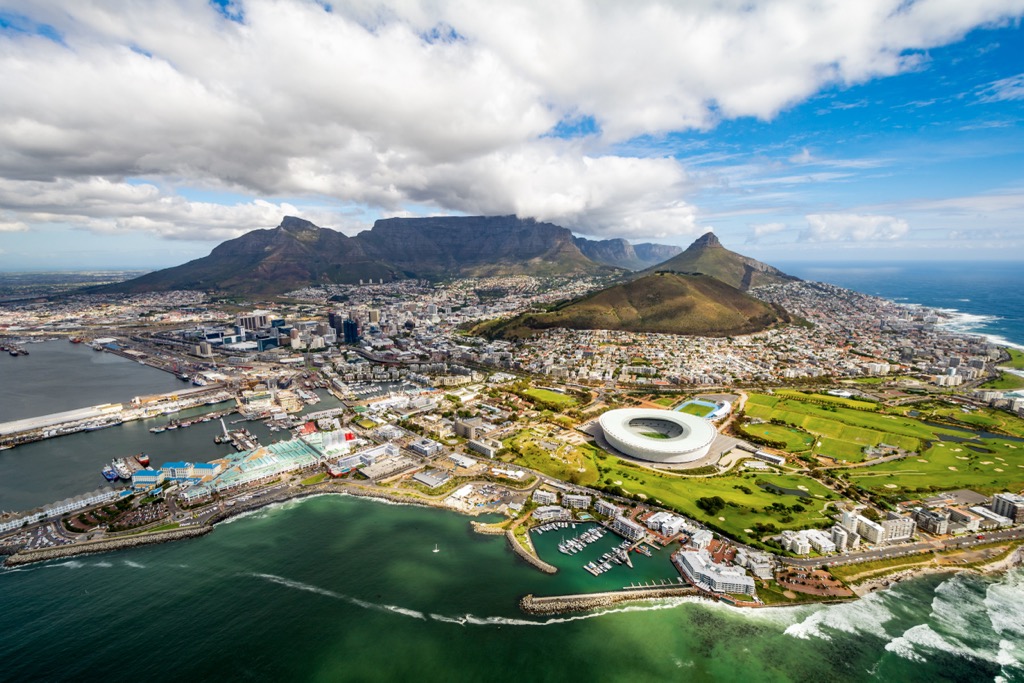
The Rainbow Nation, as South Africa is otherwise known, is the 24th most populated nation. The people echo the incredible diversity of this land. The multi-ethnic society of 60 million speaks dozens of languages, 11 of which are recognized national languages.
Covering an area of 1,221,037 sq. km (471,445 sq. mi), South Africa is the world’s 25th largest country, behind two other African nations, Angola and Mali. The geography is broadly divided into three primary regions: the coastal plains, the interior plateau, and the Great Escarpment.
As a result of its size and diverse topography, South Africa exhibits a wide range of climates, from subtropical to temperate to alpine. Coastal areas on the west and south possess a desirable yet rare Mediterranean climate with hot, dry summers and mild, wet winters.
Further inland, the interior plateau has subtropical highland and temperate climates, with warm summers and cool winters. The Great Escarpment and inland regions experience a temperate climate of cold winters, while the northeastern coastal areas possess thick, subtropical jungles. In contrast, the country's northern parts are arid or semi-arid.
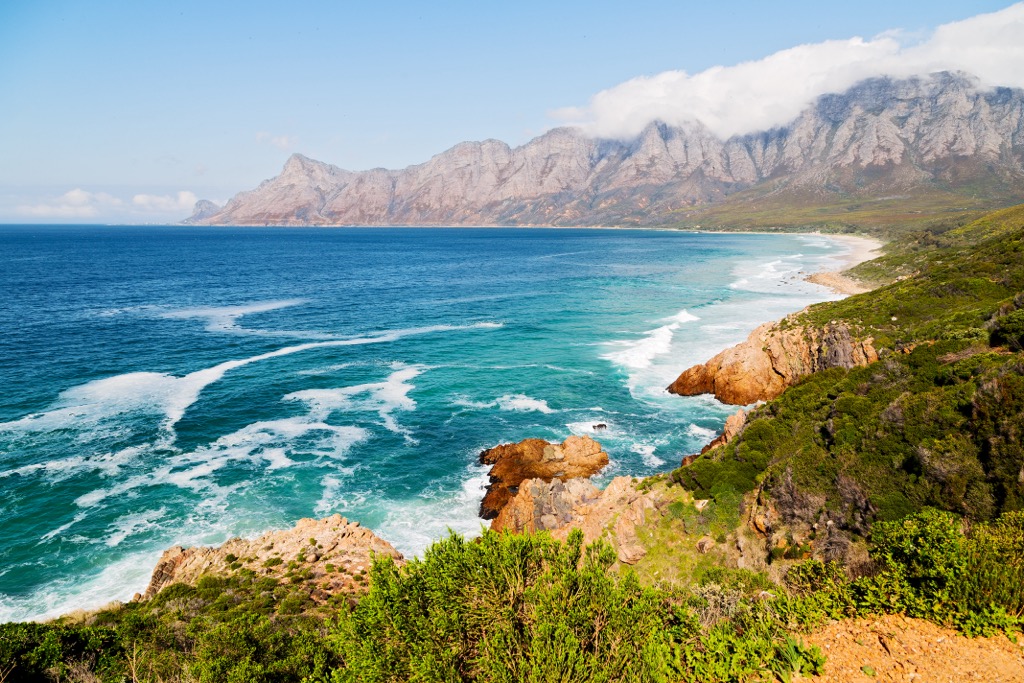
Much like the climate, South Africa’s nine provinces have their own unique geography, attractions, and cities. There are four coastal provinces: the Northern Cape, Western Cape, Eastern Cape, and KwaZulu-Natal. The inland provinces include the Free State, Gauteng, North West, Mpumalanga, and Limpopo, South Africa’s northernmost province. It is here that the Tropic of Capricorn (the 30th southern parallel) passes.
Most countries have one capital city; South Africa is the only nation with three. Pretoria is the administrative, Cape Town the executive, and Bloemfontein the judicial capital, home to the Supreme Court of Appeal.

Beautiful sandy beaches, dunes, and lagoons embody South Africa’s coastal plains. South Africa's coastline is relatively flat except for the hills of the Western Cape.
Kwa-Zulu Natal boasts warm subtropical beaches and lush vegetation along the northeastern coastline. Further south along the Eastern Cape coastline, you’ll find rugged coastal bluffs and untouched nature. The Western Cape province showcases Table Mountain and pockets of coastal hills.
Further up the coastline are the Northern Cape’s deserted bays, flat terrain, and undulating dunes. The Namib Desert then extends from the northwestern coast into Namibia.
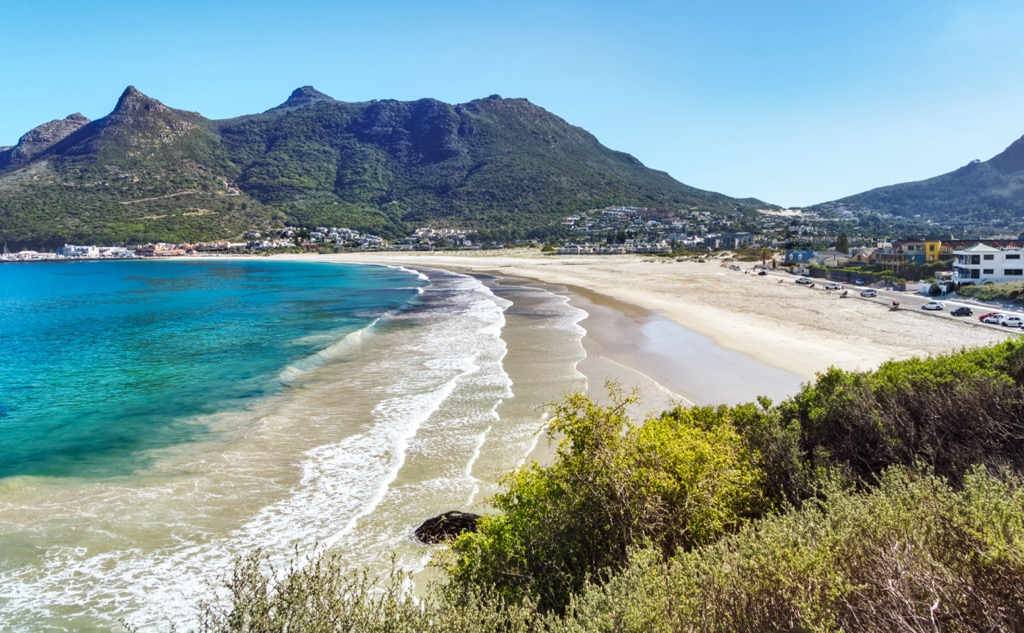
During the summer, the coastal cities of Cape Town, Durban, and Port Elizabeth, as well as the Wild Coast beaches, are major hot spots for holidaymakers. The generally mild coastal weather makes for a pleasant destination year-round. For those wishing to explore further than the beach, here are the region’s top parks, nature reserves, and forests:
Cape Winelands District Municipality
Addo Elephant Park (Zuurberg Section)
Ceres Mountain Fynbos Nature Reserve
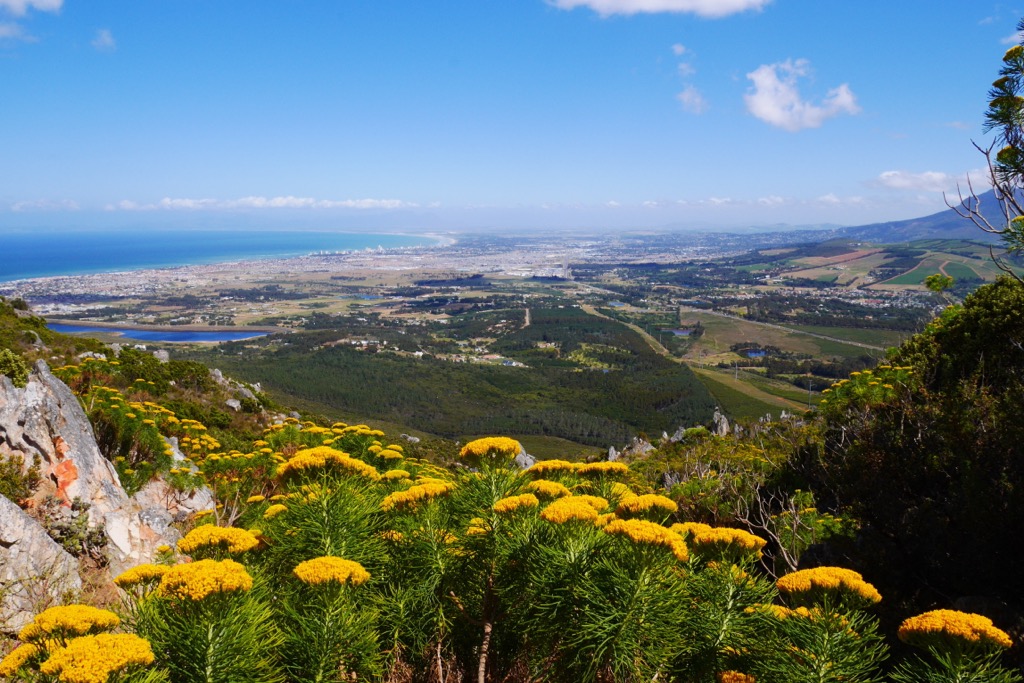
Parallel to the coast, the Great Escarpment separates the low-lying coastal plains from the interior plateau. This dramatic geological feature attracts adventure enthusiasts to South Africa's lofty peaks.
The Great Escapment’s primary mountain range, the Drakensberg, lies in the inner region of the Eastern Cape and Kwa-Zulu Natal. Extending northwards, it stretches into Mpumalanga and Limpopo provinces. In the opposite direction, the Nuweveldberge Sierra spans westwards into the Western Cape. It meets the Roggeveldberge in the Northern Cape and stretches into Namibia.
This region is home to several national parks and nature reserves, such as:
/Ai-/Ais Richtersveld Transfontier Park (ARTP)
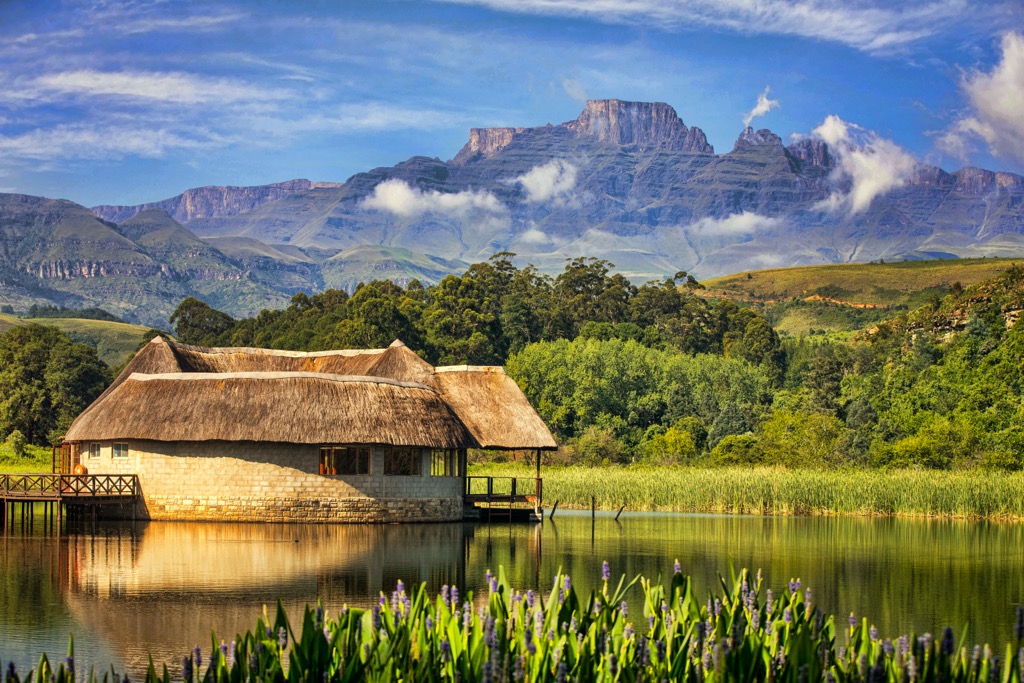
Moving inland past the Great Escarpment lies South Africa’s interior plateau. This central, flat region is home to the Great Karoo, Highveld, and Lowveld.
South Africa’s semi-desert region, the Great Karoo, spans the northern Western Cape and the southern interior Nothern Cape. The cloudless skies produce little rainfall, and extreme heat at midday transforms into biting cold at night.
Sitting at an elevation of 1,200 to 1,800 meters (3,937 to 5,905 ft), the Highveld encompasses the entire Free State province and covers North West's eastern region. In the west lies the Kalahari Desert. Finally, the Highveld extends northwards into Johannesburg and Pretoria in the Gauteng province.
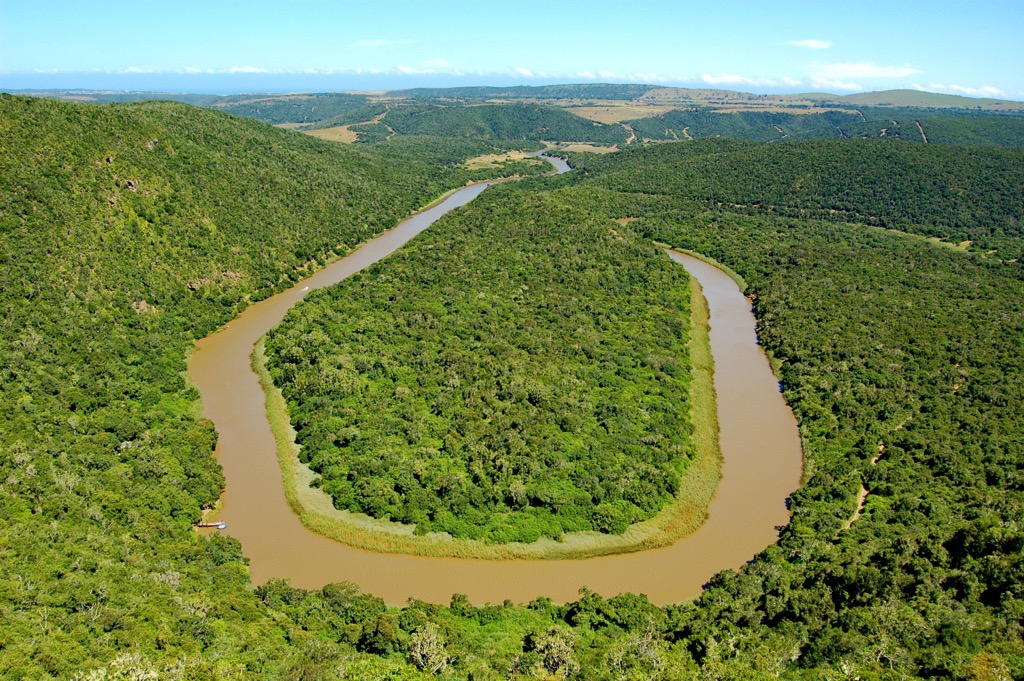
The central Highveld features vast, gently undulating grassland with a few scattered hills. A temperate climate makes it perfect for agricultural production and livestock farming. Many South African game reserves are home to the Big Five species in this region. Lions, leopards, elephants, rhinoceros, and African buffalo comprise this iconic list of the historically most dangerous big game animals.
The Highveld then dips in elevation into the Lowveld, lying at an elevation of 800 meters (2,624 ft). Situated north of the Highveld, the Lowveld forms South Africa’s northern provinces of Mpumalanga and Limpopo.
With its flat plains, gentle hills, and river valleys, the Lowveld's climate is subtropical and ripe for lush vegetation. It is a prime destination for adventure seekers, with activities such as kayaking and canyoning and game drives in South Africa's premier national parks.
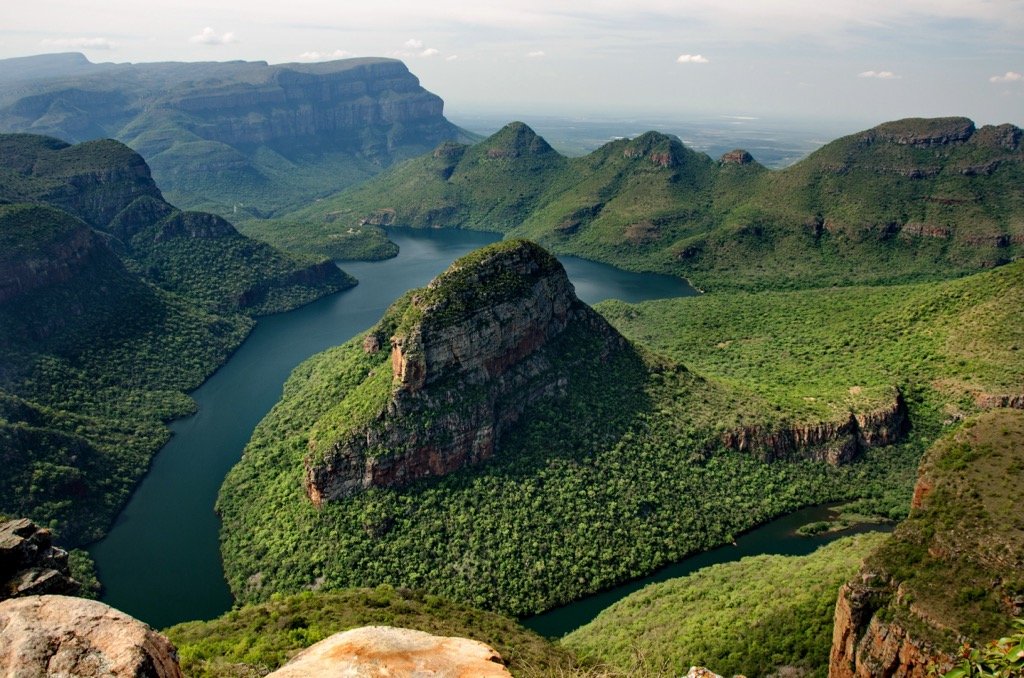
To discover South Africa’s inland plateau of endless savannas and sparse hills, these are the top areas to visit:
Golden Gate Highlands National Park
Blyde River Canyon Nature Reserve

Much like everything about this nation, South Africa’s geology is diverse, encompassing many rock formations and mineral resources. South African mountain ranges have different geological properties and characteristics depending on the region.
Along the northeast escarpment, the peaks are sheer and jagged, comprising basalt volcanic rocks. In contrast, the Table Mountain sandstone hills along the Western Cape coastline are smaller and flatter.
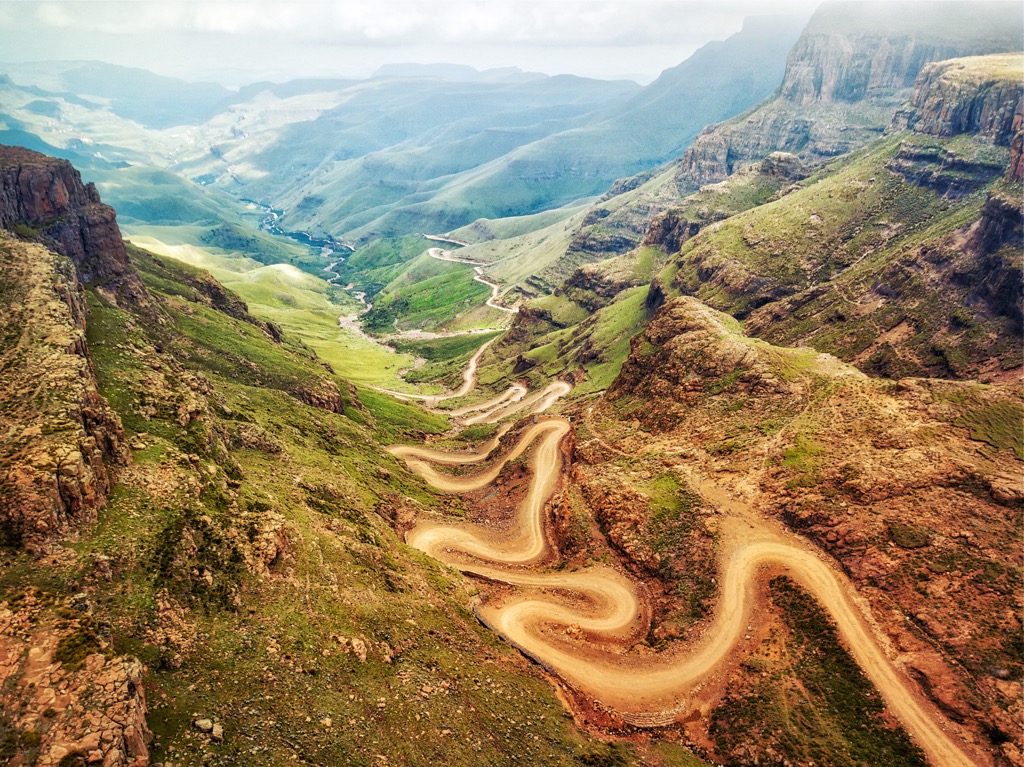
Spanning 1,000 km (621 mi), the Drakensberg is South Africa’s longest and largest range, holding 4,819 named peaks. The jagged appearance inspired the name Dragon Mountains, the Afrikaans translation. It has South Africa’s highest mountain, Thabana Ntlenyana.
The core of the Drakensberg Mountains is primarily made up of basaltic lava flows from around 180 million years ago. As a result of this extensive volcanic activity, the supercontinent of Gondwana separated.
Sandstone deposits mixed with shale in the rock bed date back to the Permian and Triassic Periods.

The Cederberg is in the Western Cape province and showcases unique rock formations, orange sandstone crags, and rich plant diversity. The highest and most prominent hill, Sneeuberg, is a popular hiking trail.
This mountain range of 132 named hills is famous for its distinctive sandstone cliffs, including the iconic Wolfberg Arch. It is also home to numerous San rock art sites, providing insight into the region’s ancient history and culture.
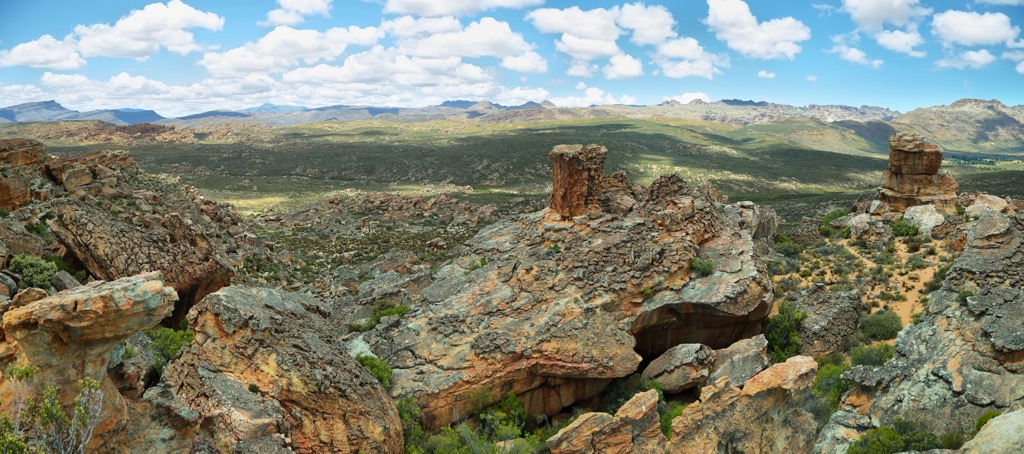
Situated in northern South Africa near Pretoria, the Magaliesberg is a mountain range extending approximately 120 km (75 mi).
Kransberg is the highest and most prominent of the range’s 196 peaks. The Magaliesberg is estimated to be over two billion years old, and quartzite cliffs, deep gorges, and dense vegetation characterize its slopes.
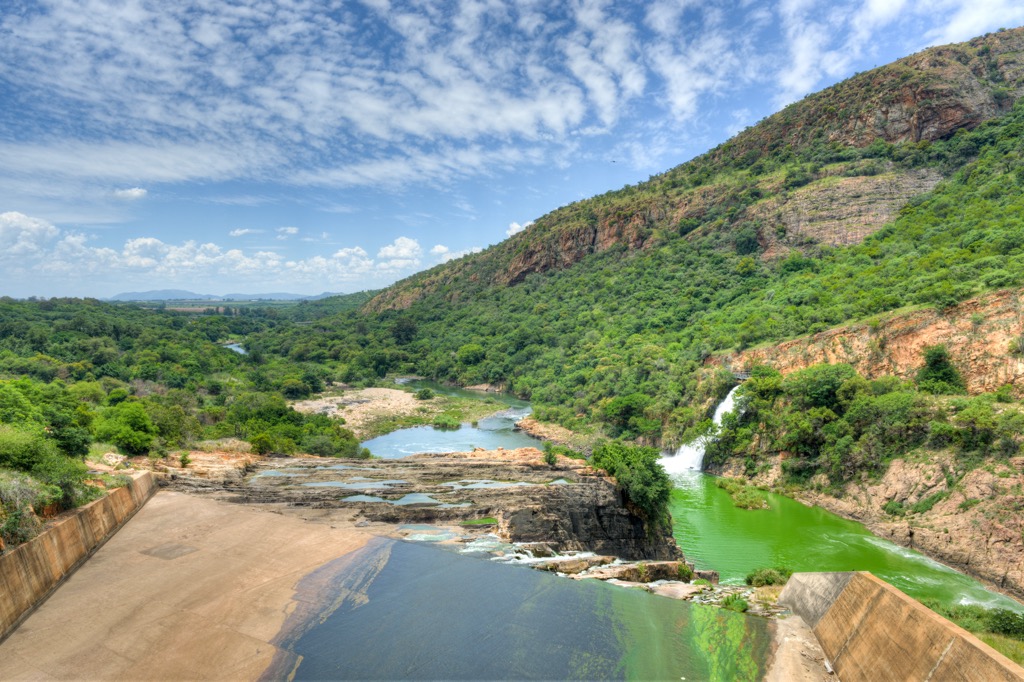
The Swartberg is a rugged mountain range stretching approximately 230 km (143 mi) east to west in the Western Cape. There are 186 named peaks; the highest and most prominent is Compassberg.
The range primarily comprises quartzite and boasts dramatic rock formations and deep gorges. One of its iconic features is the Swartberg Pass, a 24 km (15 mi) road reaching 1,574 meters (5,164 ft).
Showcasing incredible scenery, you'll overlook the semi-arid landscape of the Karoo. Holding cultural reverence, the Swartberg is a natural barrier and crossing point with several rock art sites.
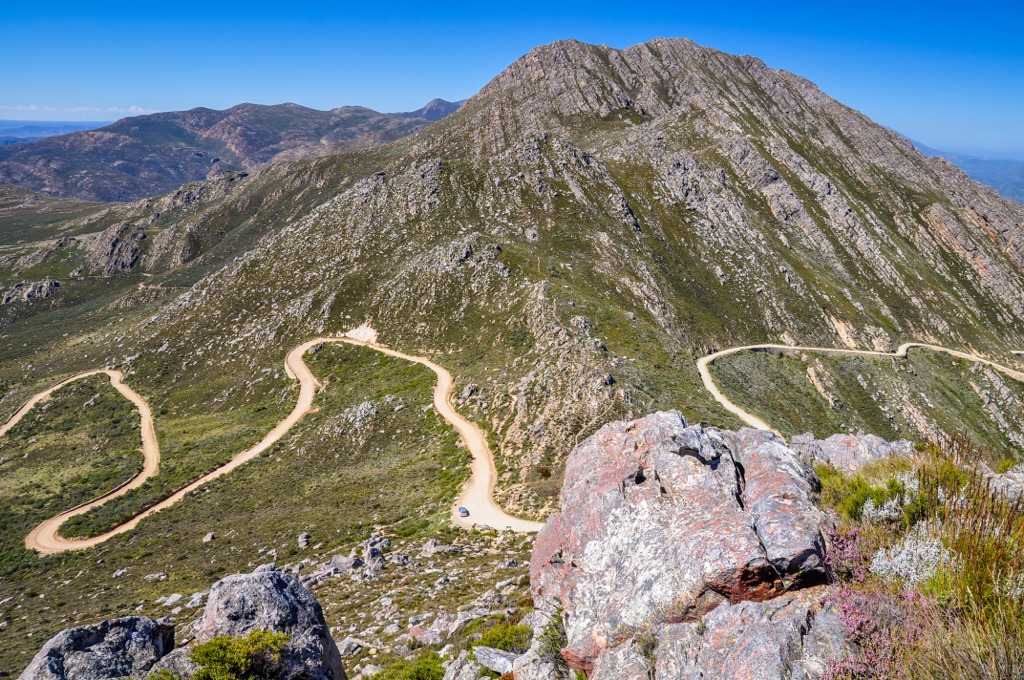
Forming a 200 km (124 mi) belt along the southern coast, the Outeniqua Mountains hold 460 named peaks. Nadouwsberg is the highest, while Cockscomb is the most prominent.
These mountains are composed of dolomitic rock and are part of the greater Cape Fold Belt, a geological formation renowned for its scenic beauty and diverse flora and fauna. The varied terrain features deep valleys, gorges, waterfalls, and steep slopes covered in dense forests.
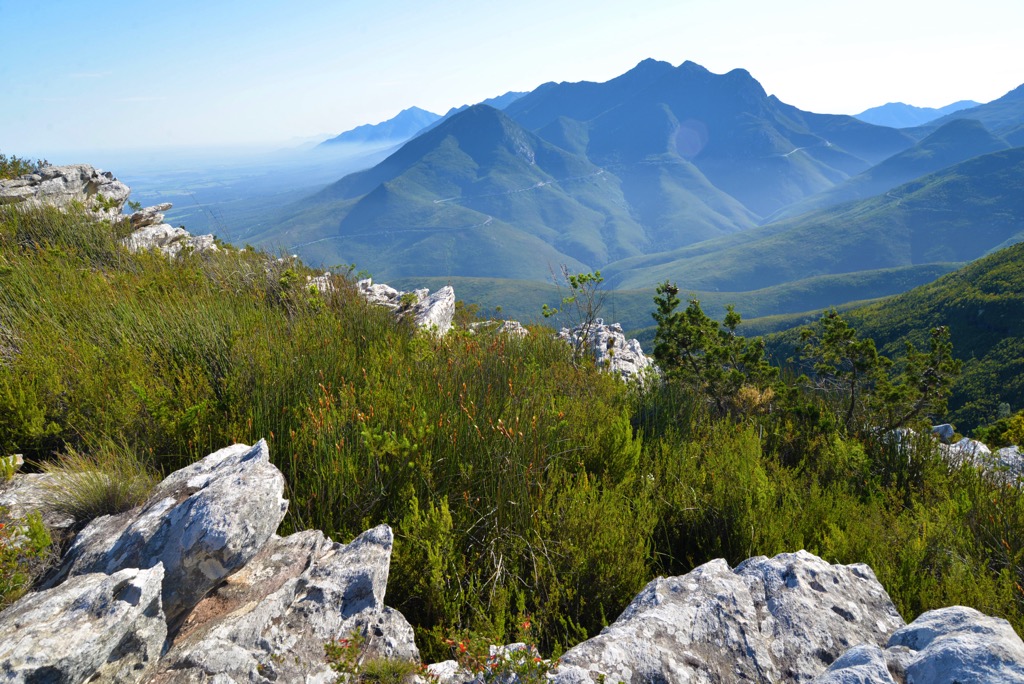
According to the Worldwide Fund for Nature (WWF), South Africa belongs to the Afrotropical realm with four distinct biomes. Within these biomes fall 16 terrestrial ecoregions, each showcasing unique ecology and biodiversity.
South Africa’s biomes and terrestrial ecoregions include:
Lush, evergreen forests and abundant plant and animal species epitomize spanning South Africa’s eastern coastal biome. The climate is tropical and subtropical, with consistent precipitation throughout the year.
Stretching from Knysna to the Amathole Mountains, endemic plant species like yellowwoods, stinkwoods, ironwoods, and Cape chestnuts grow in these montane forests. The dense foliage provides shade and humidity to epiphyte growth of ferns, mosses, and lichen.
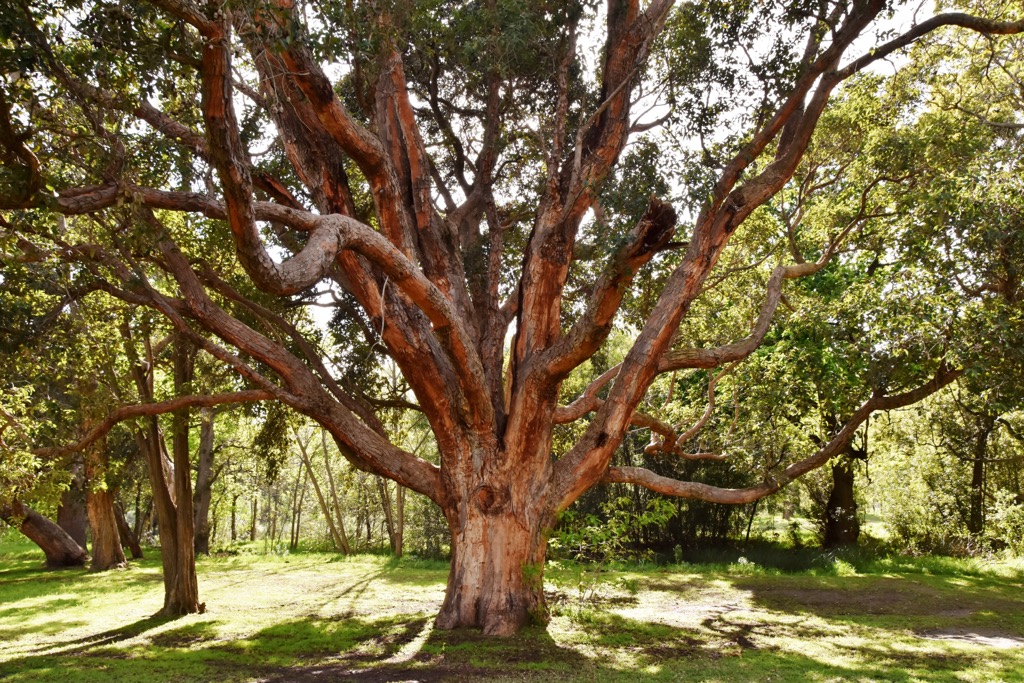
The subtropical climate, high rainfall, and varied topography provide habitat for the Afrotemperate forests of Natal mahogany, African teak, and stinkwood. Within the mosaic, pockets of dune forests feature in the coastal sandy areas, playing a vital role in coastal stabilization and protection from erosion.
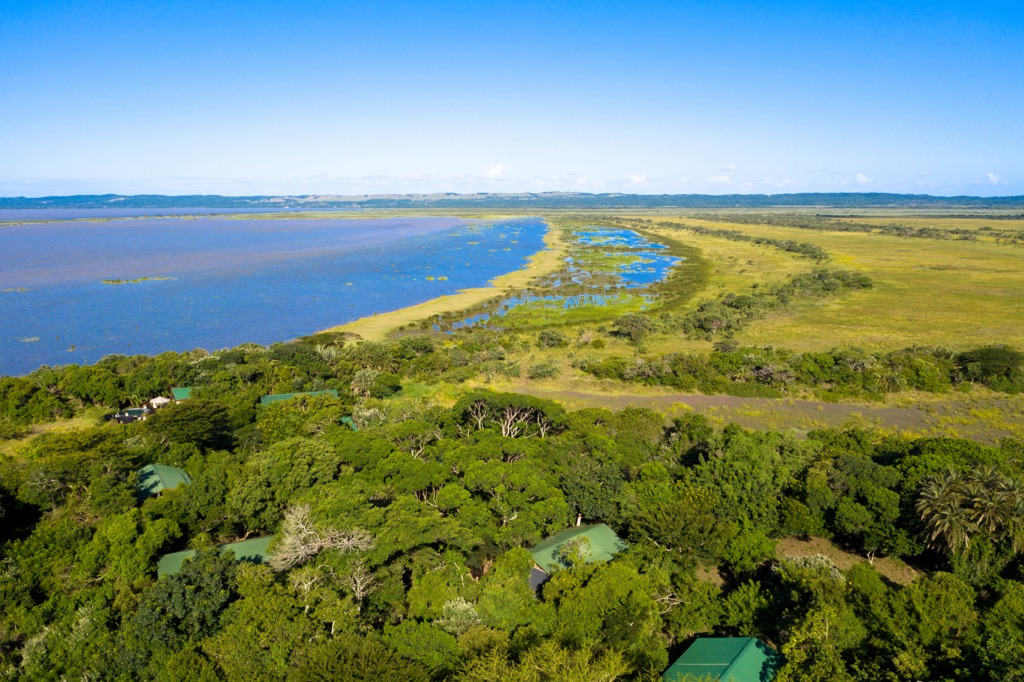
This biodiverse hotspot features coastal forests, swamp forests, grasslands, and wetlands. Also, it's home to many endemic plant species like the Maputaland cycad and giant yellowwood. You'll find African elephants, black rhinos, and rare bird species like the Palm-nut vulture among the wildlife.
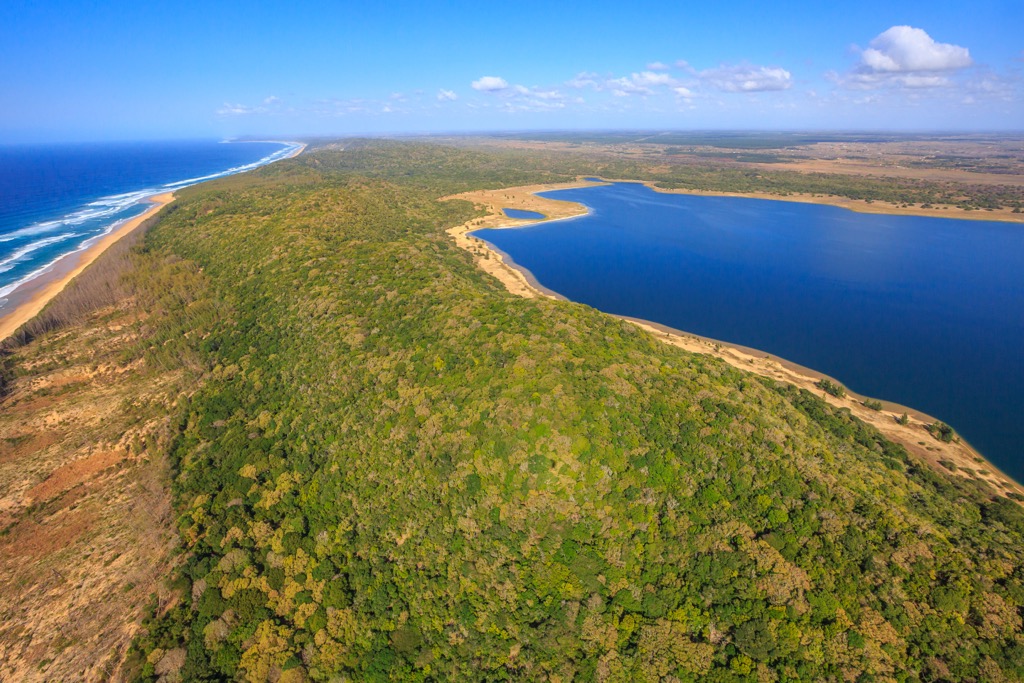
Characterized by vast grasslands, open savannas, shrublands, and scattered trees in South Africa’s Lowveld, this biome’s climate spans semi-arid to semi-humid regions. Elephants, rhinoceroses, giraffes, various antelope species, and a wide variety of birdlife inhabit this region.
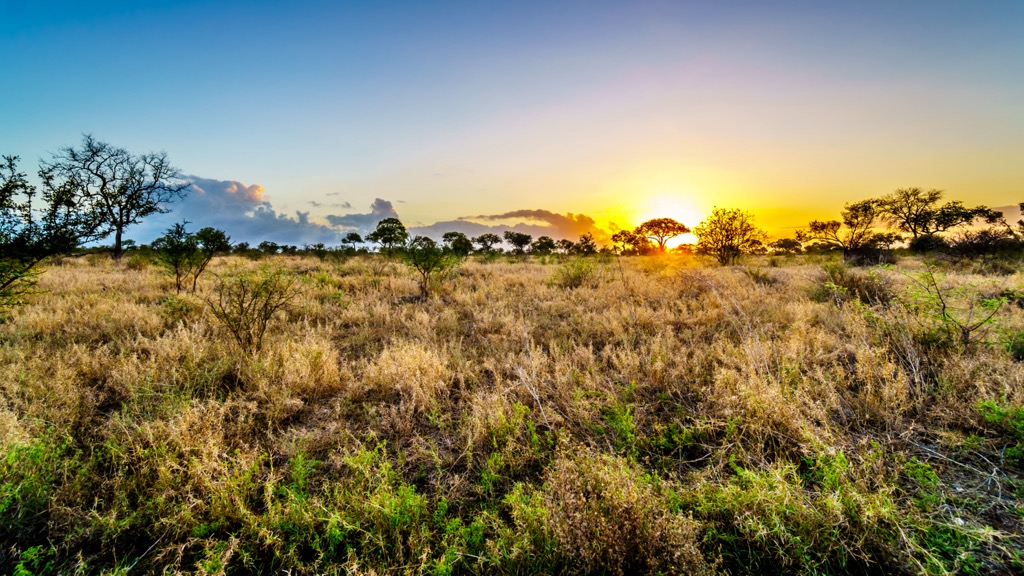
Thriving in the harsh conditions of low rainfall, high temperatures, and nutrient-poor soils, Acacia species like the camel thorn and umbrella thorn, along with Baikiaea trees like the Zambezi teak and Rhodesian teak, shape the landscape of the Kalahari Acacia-Baikiaea woodlands.
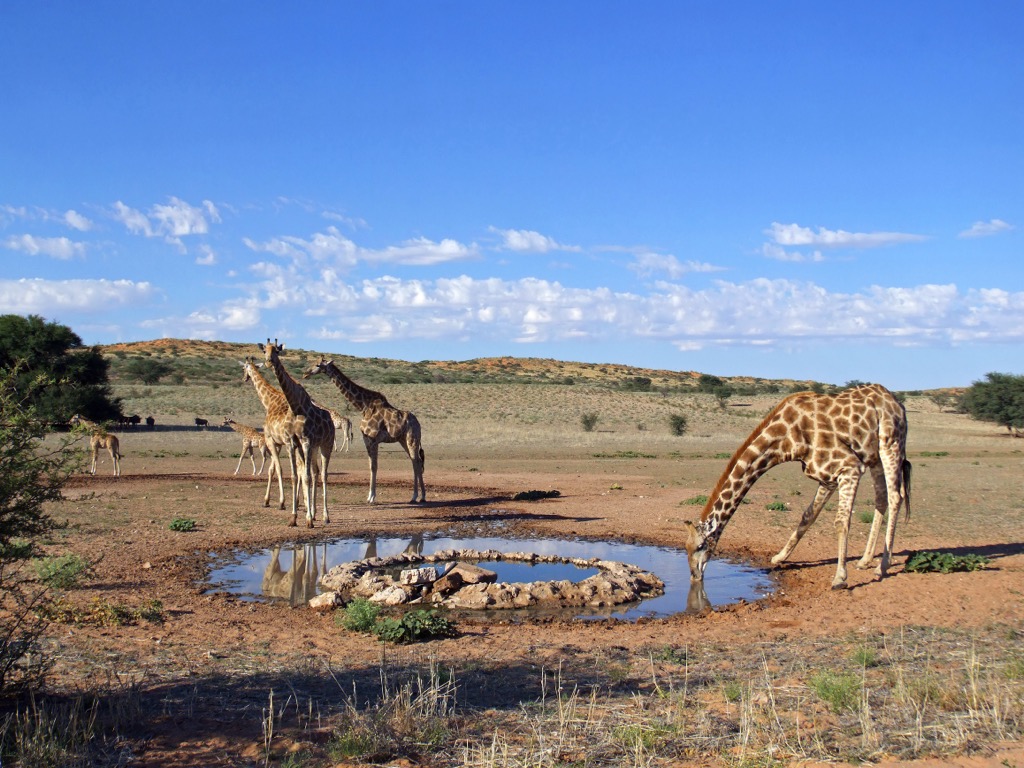
The Southern Africa bushveld features open grasslands with sparse clusters of trees. It's an ideal grazing place for antelope species, such as the kudu, impala, and blue wildebeest.

The Zambezian and Mopane woodlands are separate but interconnected ecosystems occupying a transitional zone between tropical forests and arid savannas. Mopane (pronounced mo-pahn-ee) trees and miombo woodlands dominate the environment, two hardy plant species that thrive in hot and dry climates.
High-elevation grasslands, shrublands, and scattered forests feature in this biome. Focusing mainly on the Drakensberg, it extends north in the Highveld region and falls south into the Drakensberg foothills. With elevations between 1,500 and 3,000 meters (4,921 to 9,843 ft), this ecoregion experiences moderate to high rainfall.
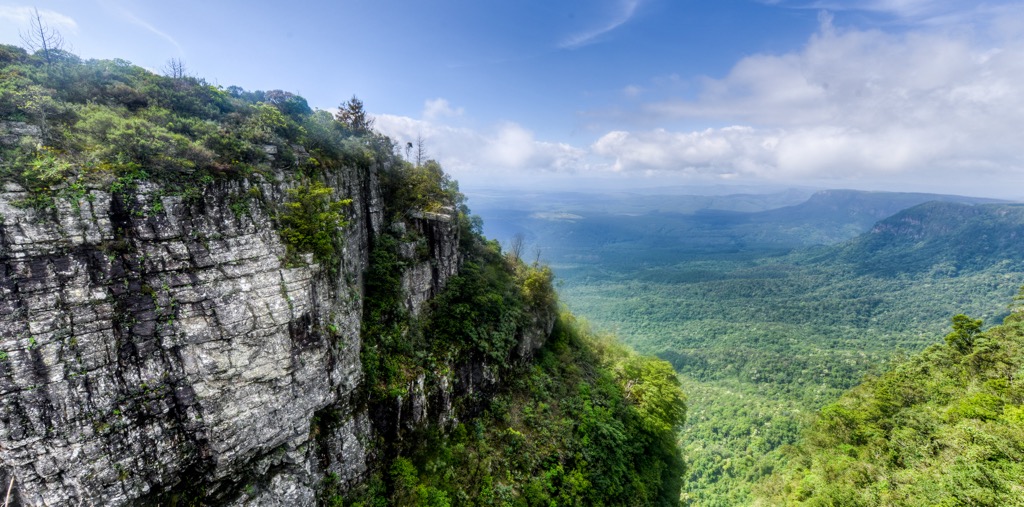
The vegetation within this ecoregion varies along elevations of 2,500 to 3,482 meters (8,202 to 11,424 ft) and rainfall patterns. Fire-resistant tussock grass and frost-hardy African sumac characterize these alpine meadows. Flowering species like the protea and the endemic Spiral Aloe also blossom here.
From 1,800 to 2,500 meters (5,905 to 8,202 ft), conifers thrive in the Drakensberg, a rarity in Africa. Lush forest canopies of yellowwood forests nurture the dense undergrowth and moss-covered trees.
Rolling fields of red grass, narrow-leafed turpentine grass, and cane grass dominate the arid Highveld grasslands, where large herbivores like Springbok graze.
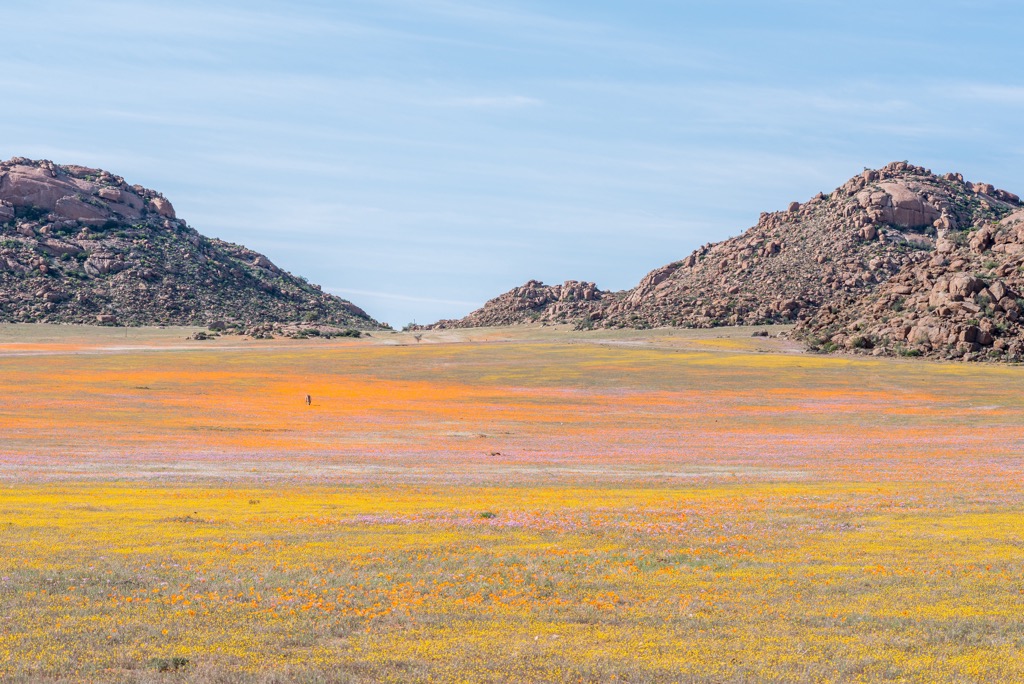
Another transitional zone between the subtropical coastal forests and the Drakensberg mountains features the drought-resistant sclerophyll evergreen shrub, which thrives in the dry climate.
Spanning from the Cape Peninsula and southern coastline of the Western and Eastern Cape, this ecoregion encompasses a mix of fynbos shrublands and Renosterveld grasslands. With a high level of endemism, the region is home to rare species like the critically endangered geometric tortoise.
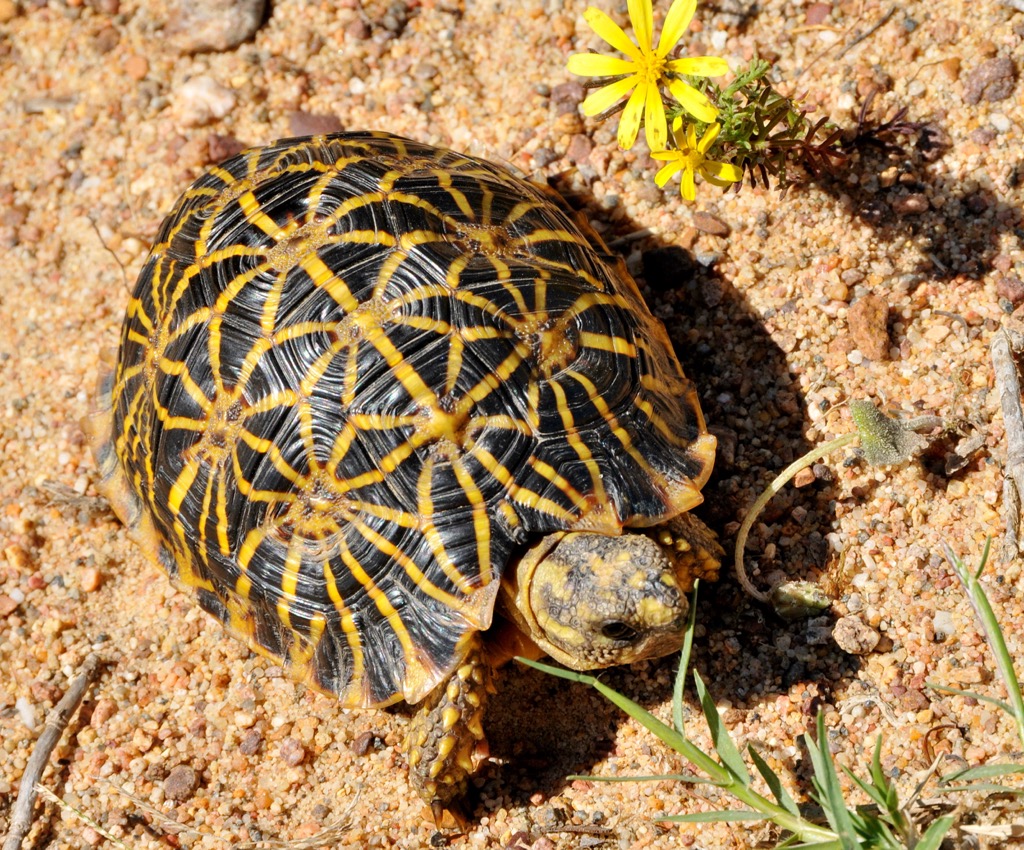
Dense shrubs of thickets dominate the Eastern Cape’s Albany region of irregular rainfall and dry climate. It’s a fertile ground for African elephants in Addo Elephant Park.
Translated as ‘fine bush,’ fynbos denotes the ericoid-type foliage of the Western Cape’s coastal region. Comprising 80% of the Cape Floral Kingdoms’ 9,000 plant species, it’s home to pieces such as Erica regia, Diastella divaricata, and Erica baccans. Renosterveld, on the other hand, means ‘rhinoceros grass,’ where gray-tinged renosterbos (Elytropappus rhinocerotis) thrive in the fields.
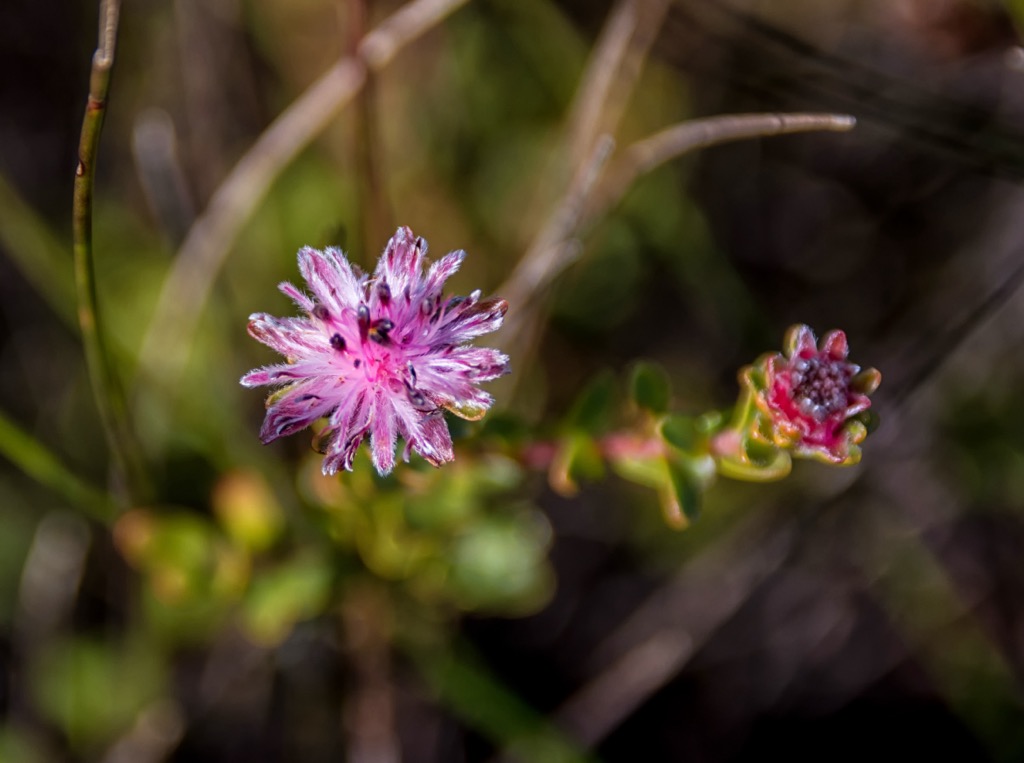
Montane fynbos occurs at higher elevations, featuring diverse shrubs, heathers, and restios, with many endemic plant species. Renosterveld, found at lower elevations, showcases a rich array of small shrubs, bulbous plants, and annual herbs, including many geophytes.
An area of sparse vegetation and little rainfall, the desert and xeric shrublands feature in parts of South Africa’s Namib and Kalahari deserts and the Nama Karoo and Succulent Karoo.
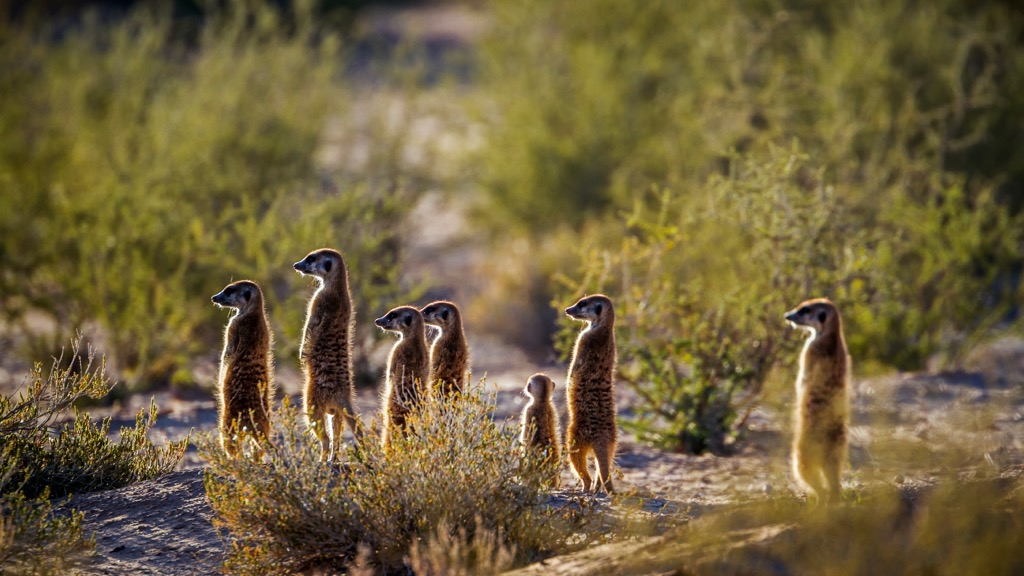
Renowned for its expansive stretches of sand and is often classified as a semi-desert or a dry savanna, this region experiences a semi-arid climate with irregular and limited rainfall.
Drought-resistant grasses, hardy acacia, camelthorn trees, and succulents thrive in this challenging environment. The ecosystem sustains diverse wildlife, including herbivores like springbok and gemsbok and predators like lions and cheetahs.
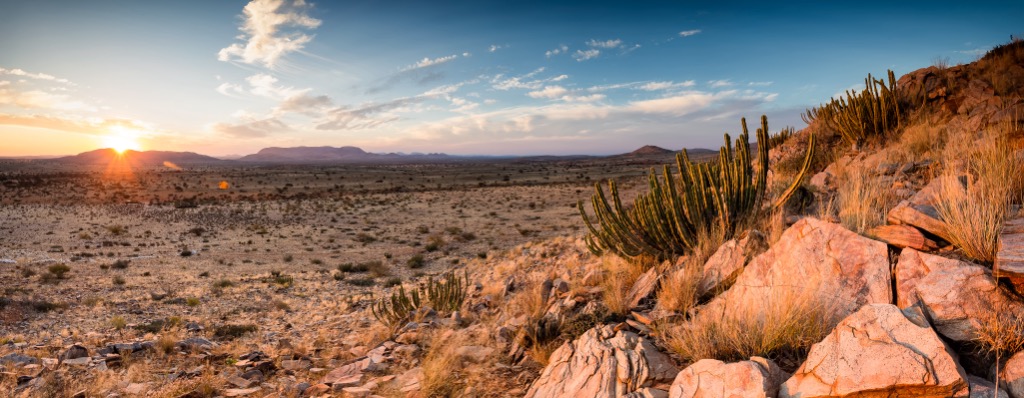
The Nama Karoo is a testament to species' adaptability in harsh desert conditions, featuring resilient plant life, including quiver trees and succulents, and diverse wildlife, such as gemsbok and leopards.
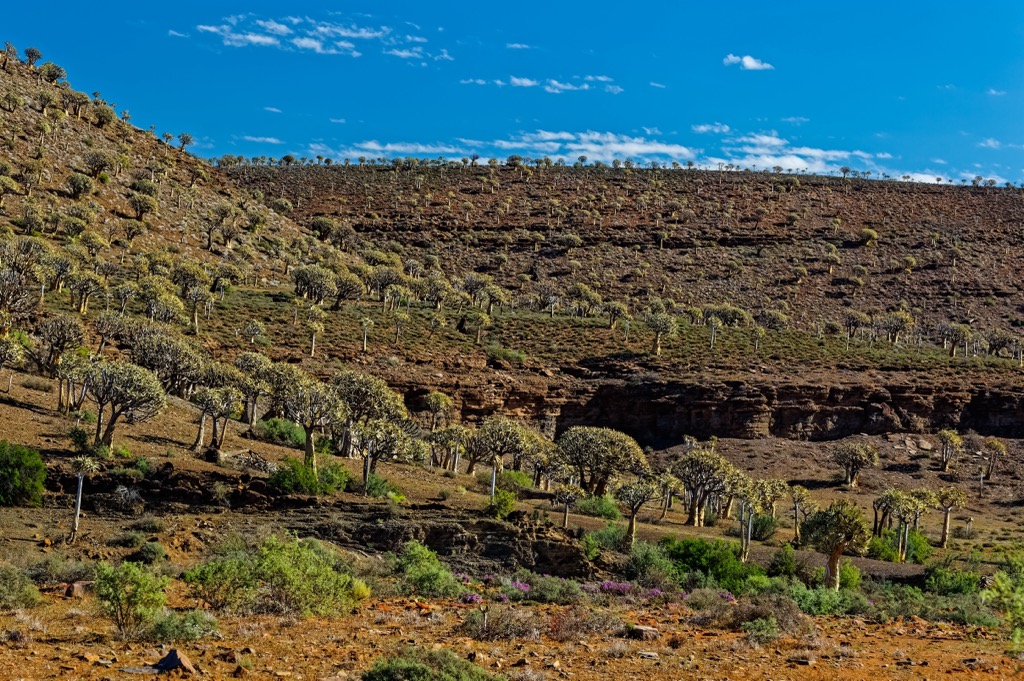
Home to over 5,000 plant species, of which 40% are endemic, the region’s flora of halfmens and quiver trees has adapted to the arid conditions by storing water in their fleshy leaves and stems. People travel from around the world to gaze upon these Suessian wonders; they are genuinely cartoons come to life.
South Africa's history is a complex tapestry, shaped by the interactions of indigenous peoples, European colonizers, and the resilience and resistance of its people. The following is a breakdown of South Africa’s historical timeline.
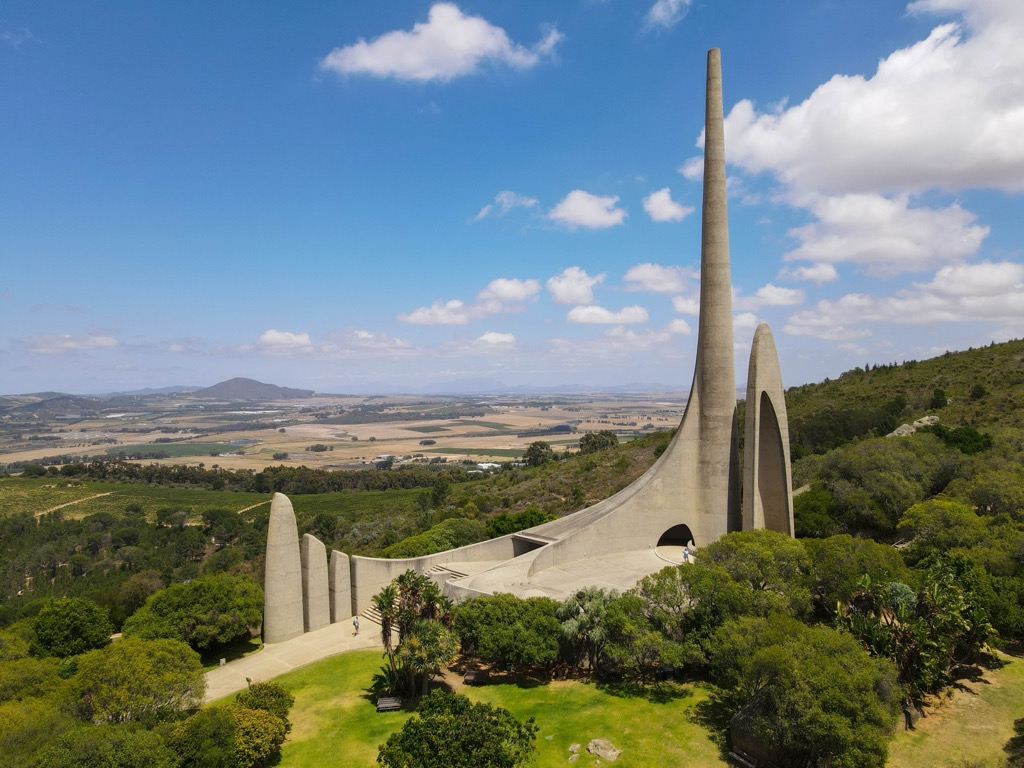
Early Homo sapiens pushed southward into present-day South Africa 150,000 - 100,000 years ago. For nearly 100,000 years, these hunter-gatherer bushmen existed in relative harmony with their environment. These early settlers are known as the Khoisan, Knoikhoim, or San peoples; their ancestors, numbering approximately 400,000, are still dispersed throughout South Africa, Botswana, and Namibia.
About 3,000 - 4,000 years ago, descendants of Bantu people began to displace the Khoisan. Bantu peoples, including the Zulu, Xhosa, and Sotho, originated in central Africa and migrated south in what is known as the Bantu expansion. Most black South Africans are Bantu; however, Khoisan people also survived to this day, albeit in limited numbers from before the Bantu expansion.
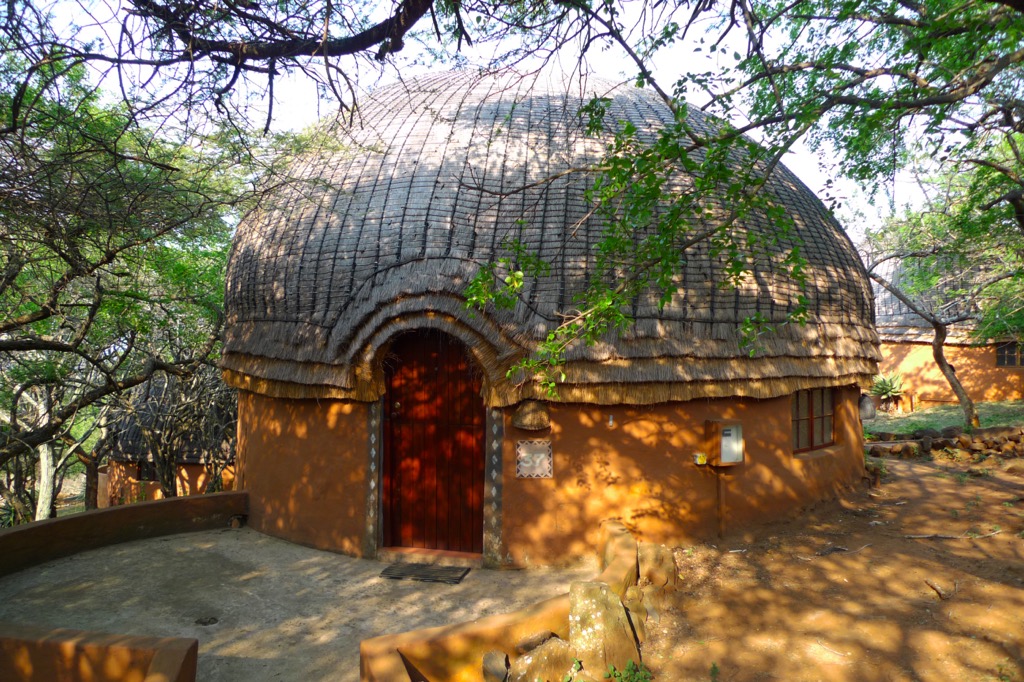
In the 15th century, European explorers, most notably the Portuguese, began visiting the southern tip of Africa. The Dutch established a permanent settlement in 1652 at Cape of Good Hope, primarily as a refreshment station for ships en route to the Dutch East Indies. The settlement grew and eventually came under British control in the early 19th century.
The British gained control over the Cape Colony in 1806. They implemented policies that marginalized the indigenous population and enforced racial segregation. The discovery of diamonds and gold in the late 19th century led to the mineral revolution and brought more European settlers to South Africa.
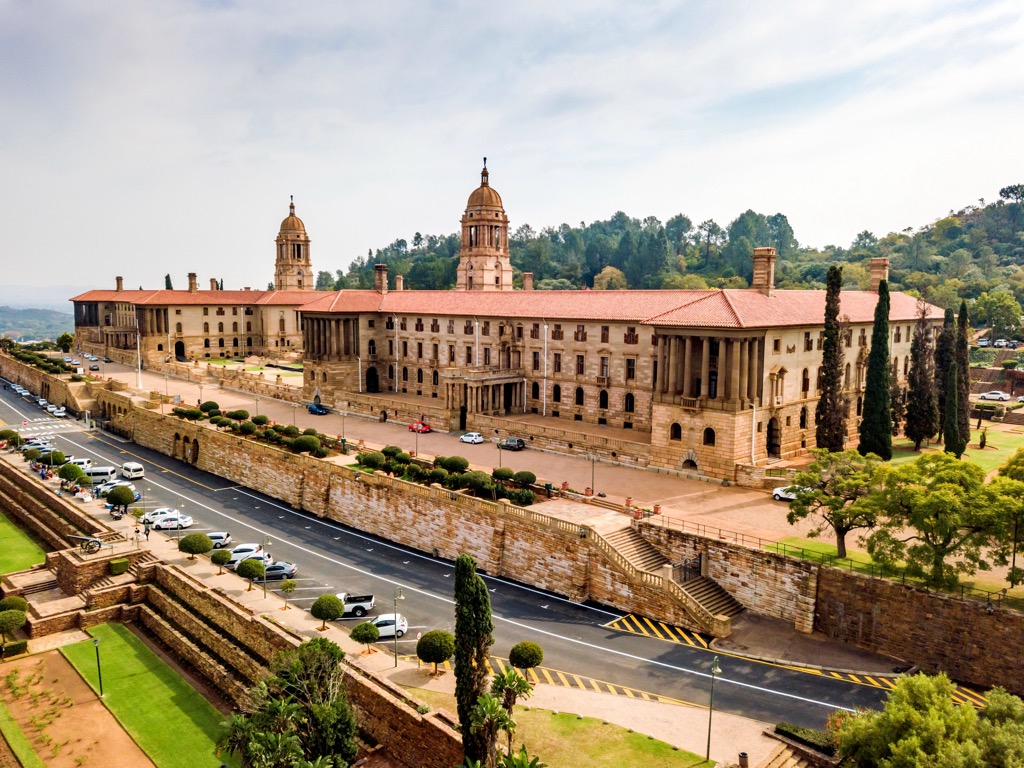
Tensions between the British colonial authorities and the Boer Republics, descendants of the Dutch settlers, over political control and mineral resources led to the Anglo-Boer Wars. Two wars followed from 1880 to 1881 and 1899 to 1902, resulting in a British victory and the establishment of the Union of South Africa in 1910.
The National Party came to power in 1948 and instituted a policy of apartheid, a system of legalized racial segregation and discrimination. Non-white South Africans were subjected to oppression, limited human rights, and forced removals into self-governing territories called Bantustans. A minority white population controlled 80% of South Africa’s land, denying the majority non-white population access. Apartheid policies sparked widespread protests and international condemnation.
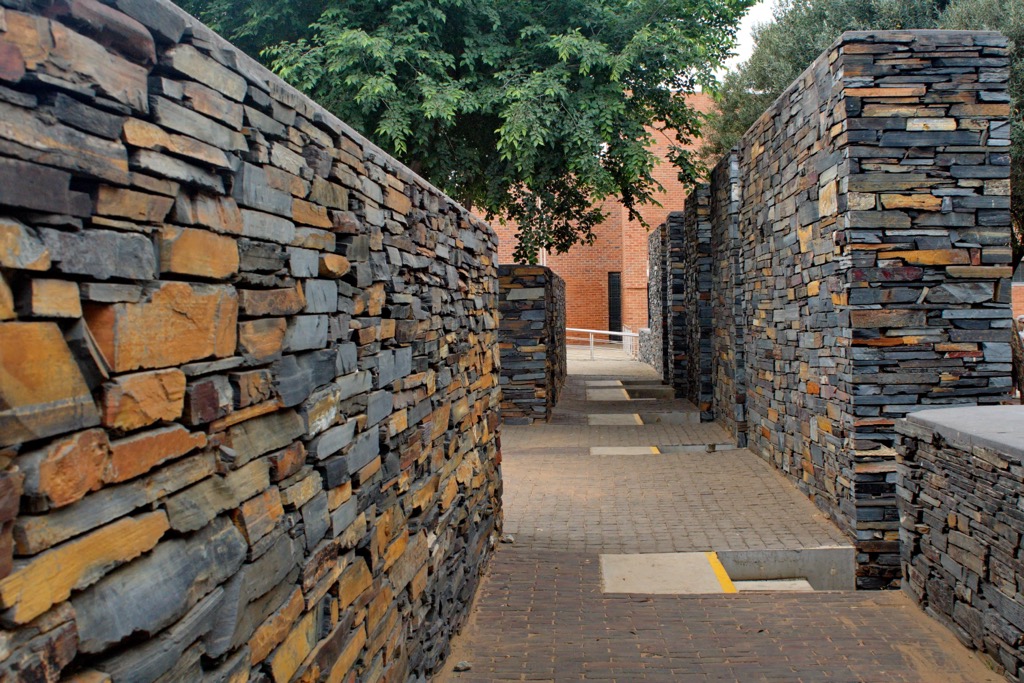
The African National Congress (ANC) and other anti-apartheid organizations led a sustained struggle against apartheid. The Sharpeville Massacre in 1960 and the Soweto Uprising in 1976 were pivotal events that brought international attention to the injustices of apartheid. Nelson Mandela, a prominent ANC leader, was released from prison in 1990 after 27 years, and negotiations began for the dismantling of apartheid.
South Africa held its first non-racial democratic elections in 1994, which marked the end of apartheid and the inauguration of Nelson Mandela as the country's first black President. The post-apartheid era has been marked by efforts to address the inadequacies of apartheid, promote reconciliation, and build a more equitable society.
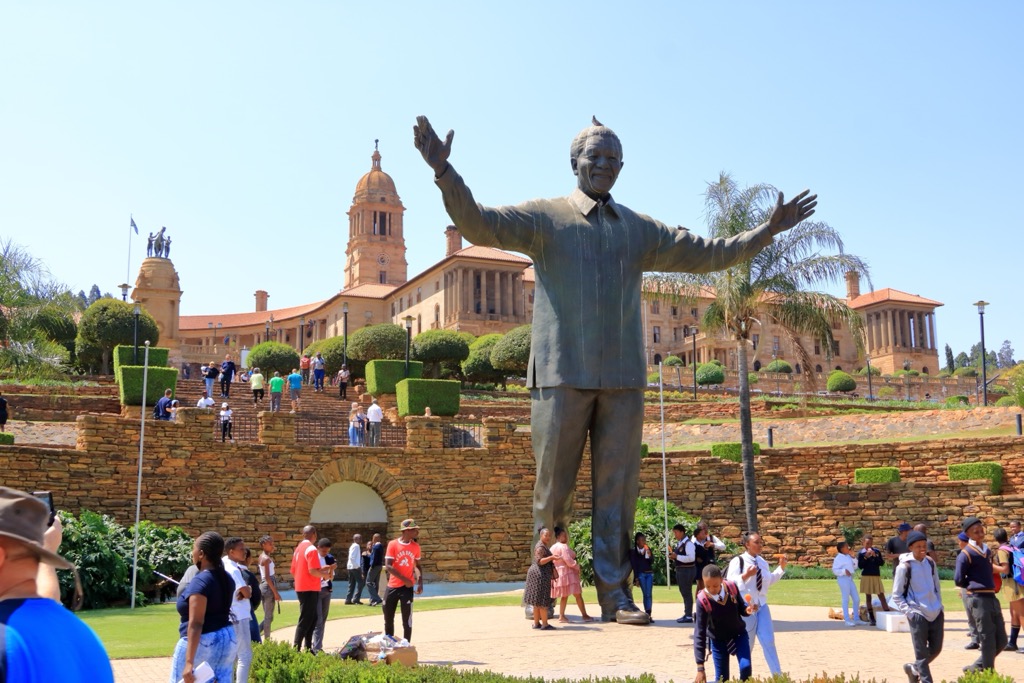
South Africa faces significant challenges, including economic inequality, high unemployment, and social issues. In the cities, ostentatious displays of wealth stand in stark contrast to the shantytowns (known as ‘townships’) and rampant homelessness.
However, South Africa has also made progress in expanding access to education, healthcare, and democratic institutions. This vibrant country's cultures, languages, and landscapes remain diverse, attracting tourists worldwide.
South Africa is a haven for outdoor enthusiasts, a prominent hiking destination with its ideal combination of warm weather, striking landscapes, and diverse topography. Here are a few ideas to get you started on your adventures.
A magnet for adventure seekers, Table Mountain National Park is a natural wonder. Encompassing the iconic Table Mountain and its surrounding areas, it holds 96 named mountains. With diverse flora and fauna, dramatic landscapes, and panoramic views of Cape Town and the Atlantic Ocean, this park offers a range of hiking trails.
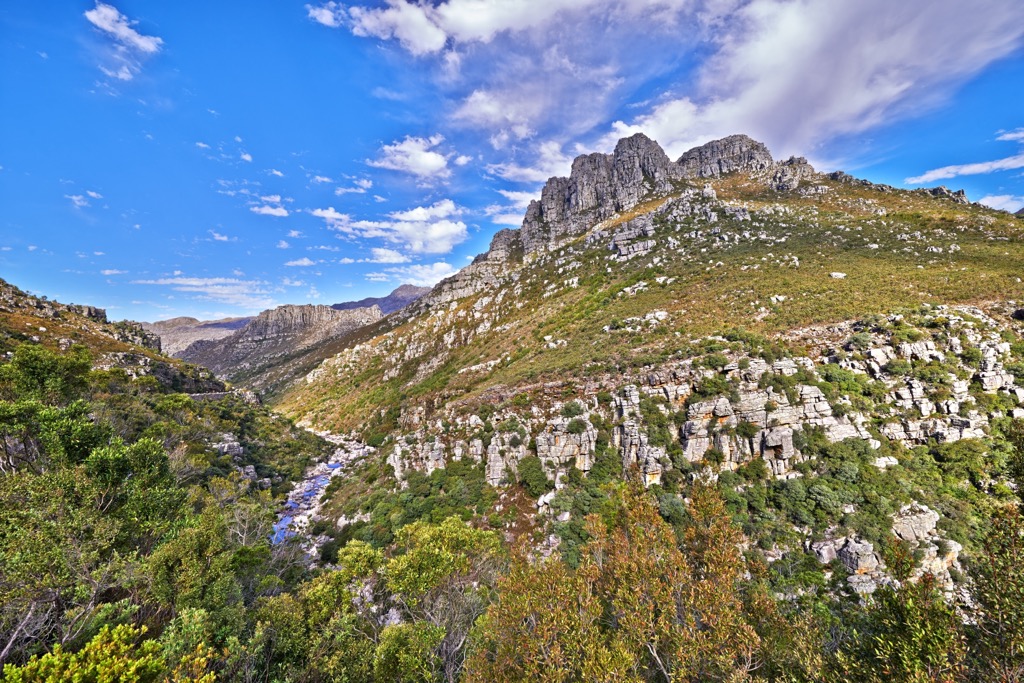
From the popular Platteklip Gorge and adventurous India Venster and picturesque Constantia Nek to Kirstenbosch, there is a trail for everyone. But the most desirable trek in Table Mountain National Park is the journey to the park's eponymous peak, offering mesmerizing views of Cape Town City Bowl and Table Bay.
In this coastal peninsula, you can also gaze at the meeting point of two oceans at Cape Point and admire African penguins at Boulders Beach. Then discover over 7,000 plant species in Kirstenbosch Botanical Gardens on the slopes of Table Mountain.
The uKhahlamba/Drakensberg Park in South Africa offers an incredible hiking experience. Stretching over 1,000 km (621 mi) along the country's eastern border, the Drakensberg is renowned for its breathtaking landscapes.
Feel on top of the world at The Amphitheatre at 3,000 meters (9,843 ft) as you overlook the jagged peaks and deep valleys below. Then descend into the evergreen shade at Gudu Falls, a spectacular 264-meter (866 ft) waterfall.

As a UNESCO World Heritage Site, the uKhahlamba/Drakensberg Park boasts dramatic scenery with towering peaks and deep valleys. Furthermore, it features abundant wildlife, endemic plants, and ancient San rock art.
The Garden Route National Park is a 300 km (186 mi) coastline reserve, which includes a rugged seaboard, ancient forests, and adventure activities. Discover various attractions, from the indigenous forests of Tsitsikamma National Park to the dramatic coastline sandstone cliffs of Knysna Lagoon and the Blue Flag Wilderness Beach.
The park's rich biodiversity and unique ecosystems attract nature enthusiasts and conservationists alike.
One famous hiking route is the Otter Trail, considered one of the world’s finest hiking trails. This 41 km (25 mi) meanders across Tstisikamma National Park, never straying too far from the coastline, where you’ll encounter rocky cliffs, cross rivers, and pass scenic waterfalls and beaches.
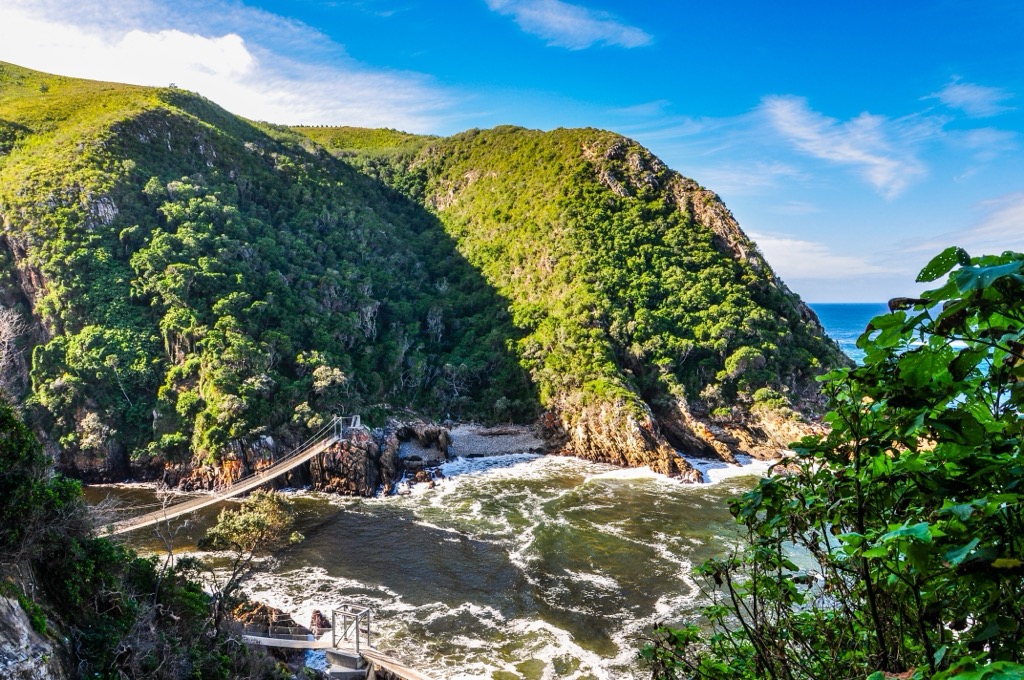
Golden Gate Highlands National Park is a stunning destination in South Africa's Free State province, known for its golden sandstone cliffs and unique geological formations.
Trek the 28 km (17 mi) Ribbok Hiking Trail to admire the sweeping vistas of jagged outcrops from Ribbokop, the highest in the park. On your journey, encounter African wildlife, including black wildebeest, zebra, and the national animal, springbok.
This picturesque park offers a range of outdoor activities, such as hiking, cycling, and scenic drives. Like the uKhahlamba/Drakensberg Park, this park is also home to ancient San rock art, providing glimpses into the region's rich cultural heritage.

The Cederberg Wilderness Area in South Africa's Western Cape is a paradise for hiking enthusiasts. Here, you can explore a vast area with trails suitable for all levels.
Marvel at unique sandstone rock formations like the Wolfberg Arch and Maltese Cross and discover ancient San rock art on the Sevilla Rock Art Trail. As you progress along your journey, look out for snow protea and Clanwilliam cedar, two of the region’s endemic plant species.
With zero light pollution and no cloud cover, the Cederberg Wilderness Area is a haven for stargazing in its clear night skies.

The Kruger National Park is a vast and diverse game reserve renowned for its wildlife safaris. Moreover, it also offers excellent opportunities for adventurers to explore its stunning landscapes.
With its immense size, and varied ecosystems of grasslands, woodlands, and rivers, the park provides a range of designated hiking trails led by experienced guides. Wildlife walks, such as the Napi Wilderness Trail, are ideal for spotting the Big Five at a distance and enjoying the unique wilderness.
If you prefer to see Africa’s wildlife up close, opt for a game drive through the open savannas for an experience of a lifetime.

Take a look at South Africa’s top 3 destinations, featuring a wealth of history, culture, and recreational activities:
Johannesburg, also known as Joburg or Jozi, is South Africa’s largest city. It’s in the Gauteng province and is the country’s economic and financial center. The town was established in 1886 after a gold discovery and has evolved into a dynamic metropolis with a diverse population and rich history.
The city celebrates cultural diversity through vibrant neighborhoods, cultural festivals, and museums like the Apartheid Museum. Explore landmarks such as Constitution Hill and Mandela House, delve into the natural beauty of the Johannesburg Botanical Garden, and enjoy the entertainment at Gold Reef City. Immerse in Soweto’s vibrancy and visit Vilakazi Street, the only road in the world once home to two Nobel Laureates (Nelson Mandela and Archbishop Emeritus Desmond Tutu).
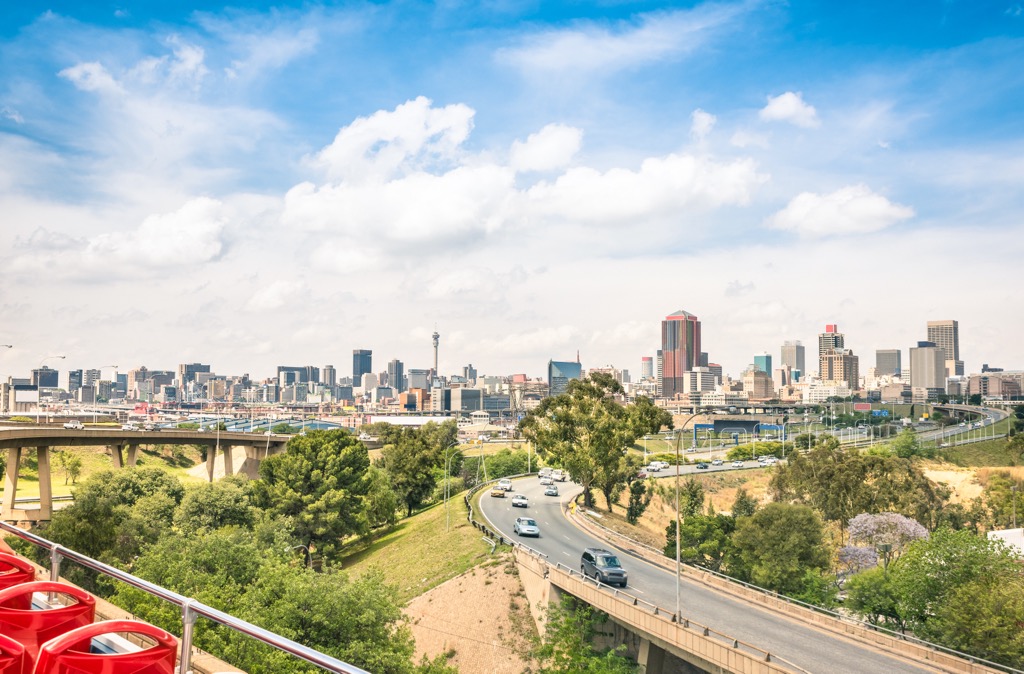
While the city has seen infrastructure development and urban renewal, challenges such as crime and socioeconomic disparities persist. Overall, Johannesburg offers a captivating blend of opportunities, attractions, and resilience, making it a prominent destination in South Africa.
A major tourist hub, Cape Town’s picturesque city is located in the Western Cape province of South Africa and is known for its stunning natural beauty. From the iconic Table Mountain and beautiful beaches to its colonial past and struggle against apartheid, Cape Town offers a diverse range of experiences.
The city's neighborhoods showcase its cultural diversity, while its culinary scene delights food enthusiasts with a fusion of flavors. The nearby Cape Winelands provide world-class wine tastings, and the city's museums and landmarks tell the story of South Africa's history and journey toward democracy.
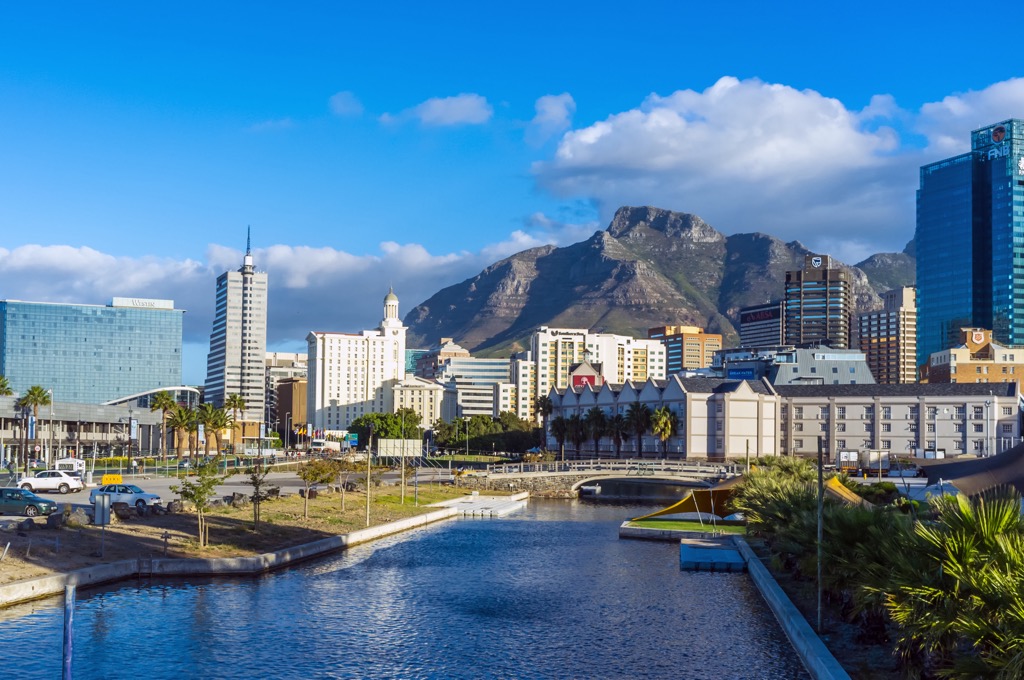
However, Cape Town faces social and economic challenges, including inequality, poverty, and crime. Nonetheless, it remains an enchanting destination that captivates visitors with its charm, making it a must-visit city for those seeking a unique and memorable experience.
South Africa’s third-largest city, Durban, is a lively urban center in KwaZulu-Natal. The city's beautiful coastline stretches along the warm Indian Ocean, providing swimming, surfing, and sunbathing opportunities.
Durban is known for its rich Indian and Zulu heritage, reflected in its cuisine, architecture, and festivals. The city's modern infrastructure, bustling urban atmosphere, and diverse economy, including the busiest port in Africa, contribute to its status as a significant economic and commercial hub.

Durban also boasts a thriving arts and music scene, numerous cultural sites and museums, and easy access to natural attractions such as the Valley of a Thousand Hills and uKhahlamba-Drakensberg Park. Whether you're seeking relaxation on the beach, immersion in vibrant cultures, or exploring the mountains, Durban has something for everyone.
Explore South Africa with the PeakVisor 3D Map and identify its summits.








